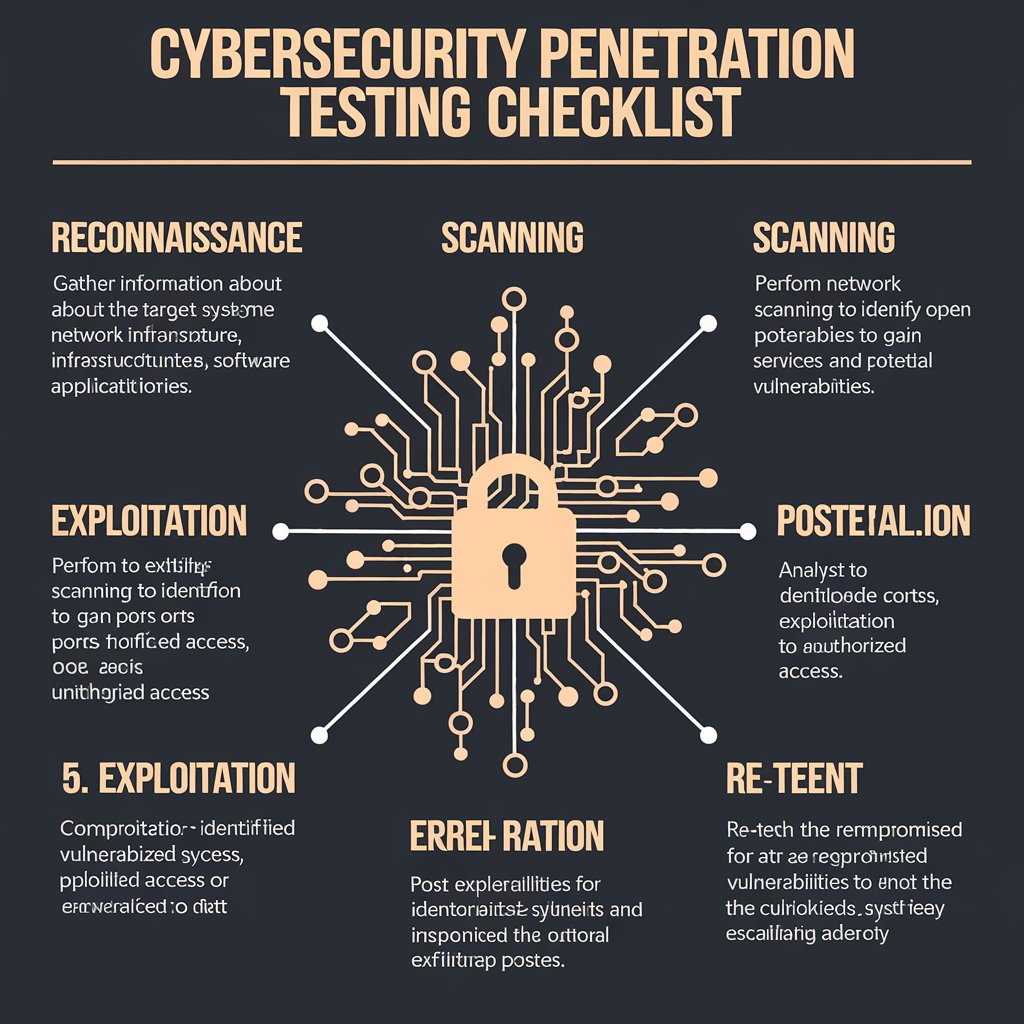UA
6 Min Read
1. Pre-Test Planning & Preparation
Define Scope:
Determine the target systems, applications, networks, and infrastructure to be tested.
Identify boundaries to ensure no critical assets are inadvertently affected.
Specify testing objectives, such as identifying vulnerabilities, assessing defense mechanisms, or validating existing security measures.
Obtain Authorization:
Ensure legal permissions are obtained for testing all systems.
Establish a clear understanding between stakeholders regarding the test’s goals and limitations.
Identify Testing Team:
Ensure the team includes experienced penetration testers or a trusted third-party vendor.
Verify team credentials and ensure adherence to ethical hacking standards.
Determine Testing Methodology:
Choose between Black Box (no prior knowledge of the target), White Box (full access and knowledge), or Gray Box (partial knowledge of the target).
Establish which penetration testing techniques will be used, including manual and automated testing.
Define Communication Channels:
Set clear communication guidelines for reporting progress and vulnerabilities during the test.
Ensure timely reporting of critical vulnerabilities.
2. Information Gathering (Reconnaissance)
Passive Reconnaissance:
Use public sources (social media, WHOIS databases, DNS records) to gather information about the organization’s systems, staff, and technologies without directly interacting with the target.
Active Reconnaissance:
Use tools like Nmap or Nessus to scan for open ports, services, and vulnerabilities in the target systems.
Map out the network structure and identify all exposed assets, such as web applications, databases, and email servers.
Footprinting:
Identify the IP addresses, domain names, subdomains, and email addresses related to the target.
Map out network topology, including routers, firewalls, and other critical infrastructure.
3. Vulnerability Assessment
Network and System Scanning:
Conduct vulnerability scans using tools like Nessus, OpenVAS, or Qualys to identify known vulnerabilities in the target systems and software.
Assess for weaknesses in public-facing systems, including web servers, email servers, DNS, and FTP servers.
Web Application Security Testing:
Identify common web application vulnerabilities, such as SQL injection, Cross-Site Scripting (XSS), Cross-Site Request Forgery (CSRF), and Insecure Direct Object References (IDOR).
Use tools like Burp Suite, OWASP ZAP, or Nikto to identify flaws in authentication mechanisms, session management, and input validation.
Wireless Network Testing:
Evaluate Wi-Fi networks for weak encryption (e.g., WEP or WPA), misconfigurations, and default credentials.
Test for unauthorized access points (APs) and attempt to break weak Wi-Fi passwords.
4. Exploitation
Exploit Vulnerabilities:
Attempt to exploit identified vulnerabilities to assess the potential risk and impact.
Use common exploit frameworks such as Metasploit, Core Impact, or custom scripts to gain unauthorized access to systems, applications, or networks.
Privilege Escalation:
Test for privilege escalation opportunities by attempting to gain elevated access (e.g., root or admin privileges).
Exploit flaws like misconfigured file permissions or weak user access controls.
Pivoting:
Once access is gained, attempt to pivot to other systems within the network.
Identify potential lateral movement pathways to access more sensitive or critical resources.
5. Post-Exploitation
Data Exfiltration Simulation:
Simulate the extraction of sensitive data, such as customer records, financial data, or intellectual property.
Attempt to identify and exfiltrate this data using techniques like HTTP tunneling, DNS exfiltration, or file sharing over compromised services.
Persistence:
Test for persistence mechanisms, such as backdoors, rootkits, or other means that would allow an attacker to maintain access after the pen test ends.
Try to install malicious software that would survive system reboots or account changes.
Covering Tracks:
Attempt to delete logs or obscure traces of the penetration testing activities to simulate how a real attacker might cover their tracks after an attack.
6. Reporting
Document Findings:
Provide a detailed report of all discovered vulnerabilities, including severity, exploitability, and impact.
Include descriptions of the exploited vulnerabilities, how they were found, and steps taken to exploit them.
Remediation Guidance:
Offer specific recommendations to mitigate or eliminate the identified vulnerabilities. This may include patching, configuration changes, or enhancing access controls.
Risk Assessment:
Prioritize vulnerabilities based on their potential impact and likelihood of exploitation.
Provide a risk assessment, highlighting critical vulnerabilities that could lead to a breach or significant damage.
Provide Evidence:
Include screenshots, logs, or other evidence of successful exploitation, providing the client with the proof of concept.
Executive Summary:
Summarize key findings for senior stakeholders, with an emphasis on business impact and risk mitigation strategies.
7. Remediation Testing
Fix Vulnerabilities:
Work with the development or IT teams to implement fixes for the identified vulnerabilities.
Apply patches, change configurations, update access controls, and secure vulnerable services.
Retest:
Conduct retesting of critical vulnerabilities to ensure that remediation efforts were successful.
Verify that previously exploited vulnerabilities are no longer accessible.
Continuous Monitoring:
Recommend establishing continuous monitoring mechanisms to detect and respond to future vulnerabilities or attacks.
8. Post-Test Evaluation and Feedback
Lessons Learned:
Review the findings and process with relevant stakeholders to assess what went well and what could be improved in future penetration tests.
Improve Security Practices:
Update security policies, procedures, and employee training based on the insights gained from the pen test.
Incorporate findings into broader security awareness campaigns and ongoing risk management strategies. audit3aa
Join our newsletter list
Sign up to get the most recent blog articles in your email every week.
You can copy our materials only after making sure that your services are safe.
This site is protected by reCAPTCHA and the Google Privacy Policy and Terms of Service apply.










